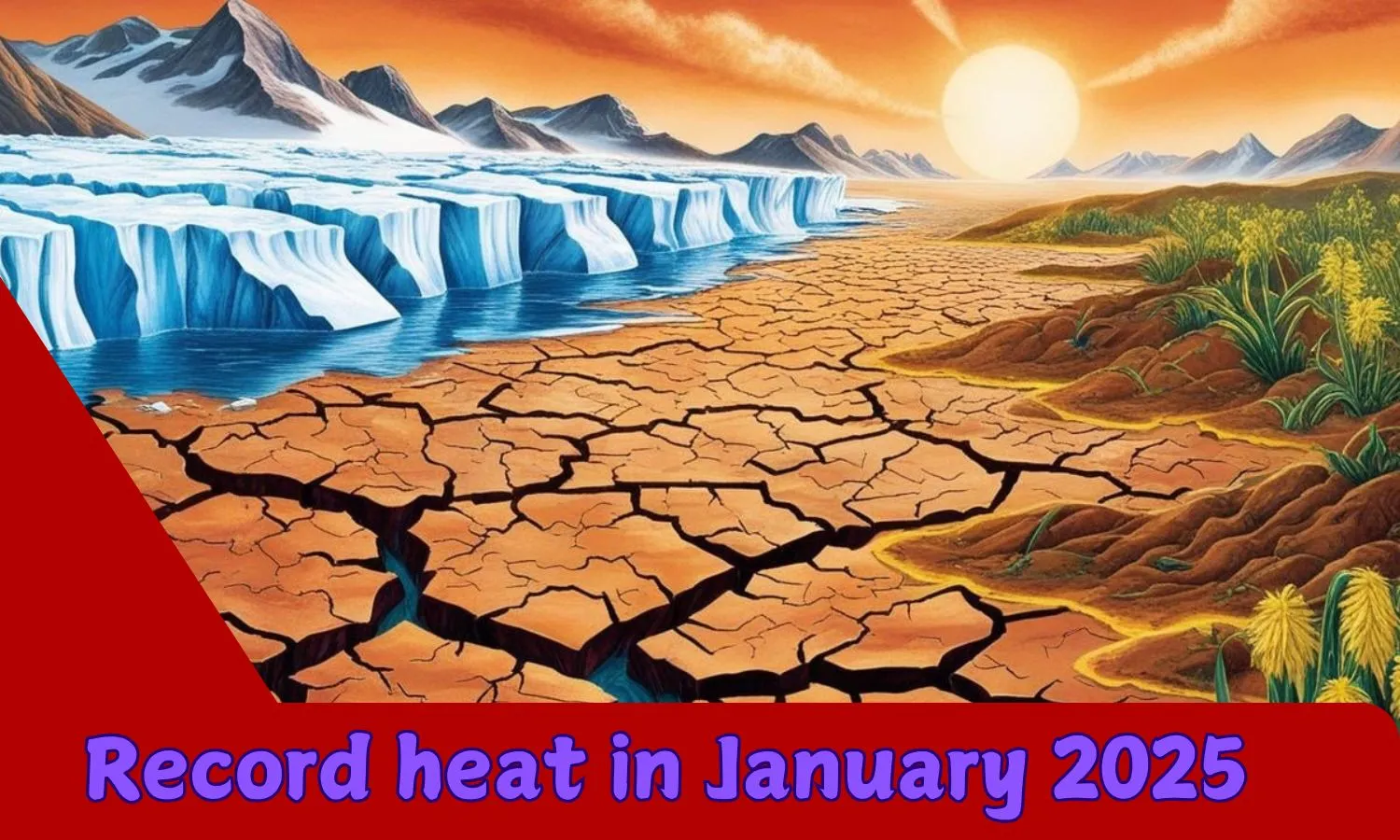Explainer: Record heat in January 2025 should be an alarming bell in taking measures to mitigate climate change
January 2025 marked another alarming milestone in the climate crisis, setting a new record as the warmest January on record globally.;

January 2025
January 2025 marked another alarming milestone in the climate crisis, setting a new record as the warmest January on record globally. This extraordinary heatwave, the 18th consecutive month with global temperatures exceeding 1.5°C above pre-industrial levels, has left scientists stunned, particularly given the presence of La Niña, a cooling phenomenon in the Pacific Ocean.
According to Copernicus, the European Union's climate change service, the global average surface air temperature in January 2025 reached 13.23°C, a staggering 0.79°C above the 1991-2020 average and 1.75°C above pre-industrial levels. Despite the anticipated cooling influence of La Niña, temperatures remained exceptionally high, highlighting the accelerating pace of global warming.
Regional temperature variations were significant. While parts of North America, South America, and parts of Asia experienced above-average temperatures, other regions, including parts of the Russia, saw below-average readings. The impact of this warming trend is evident in the increasing frequency and intensity of extreme weather events such as heatwaves, heavy rainfall, and droughts.
Ocean temperatures also showed concerning trends. January 2025 witnessed the second-highest average sea surface temperature on record, despite the presence of La Niña. While some areas showed cooling, others, particularly in the eastern equatorial Pacific, remained unusually warm, suggesting a potential slowdown in the El Niño-La Niña cycle.
This alarming trend aligns with a recent study published in Advances in Atmospheric Sciences, which found new temperature records in six major ocean basins, further emphasizing the significant warming of the global ocean.
While the cooling influence of La Niña was expected to temper global temperatures, its impact appears to be diminishing. Scientists are closely monitoring this development, as the ocean plays a crucial role in regulating the Earth's climate. India also experienced significantly warmer-than-average temperatures in January 2025. The monthly average temperature was 0.94°C above the long-term average, making it the third-warmest January since 1901.
The unprecedented warming underscores the urgent need for global action to mitigate climate change. The continued reliance on fossil fuels is driving this alarming trend, and immediate and drastic reductions in greenhouse gas emissions are crucial to avert the most catastrophic consequences of climate change.
Key Points:
- January 2025 was the warmest January on record globally.
- This marks the 18th consecutive month with temperatures exceeding 1.5°C above pre-industrial levels.
- La Niña had a less significant cooling effect than expected.
- Ocean temperatures continue to rise, with significant warming observed in several major ocean basins.
- India also experienced significantly warmer-than-average temperatures in January.
- This alarming trend emphasizes the urgent need for global action to mitigate climate change.
Global temperature rise is primarily attributed to humans burning fossil fuels which have led to record concentrations of greenhouse gases in the atmosphere. Other factors are also key, including deforestation. The World Meteorological Organisation (WMO) warned in December 2024 that warming fuelled by these emissions might persist in 2025, despite La Nina.
The record-breaking January temperatures align with research suggesting an acceleration in global warming. Although some scientists expected 2025 to be cooler than 2023 and 2024 due to La Nina, the persistent record warmth is a cause for concern. Some researchers maintain that 2025 could still become the warmest year on record.

